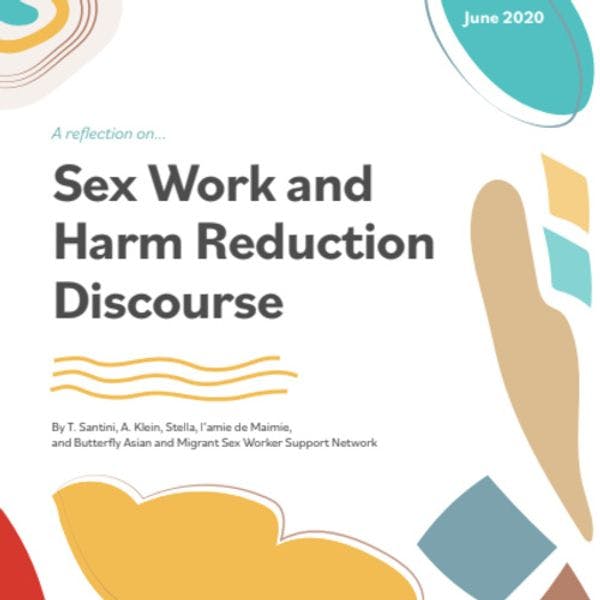Sex work and harm reduction discourse
By T. Santini, A. Klein, Stella, l’amie de Maimie, and Butterfly Asian and Migrant Sex Worker Support Network
This document was created to contribute to sex worker organizations’ reflections about, and their capacity to evaluate and use, the language of harm reduction as it relates to sex work, particularly when interfacing with policy makers, funders, media, researchers and other actors. Currently, harm reduction language is used more and more frequently by people outside of criminalized and affected communities (e.g. politicians, lawyers/judges, academics, service providers, prohibitionists, etc.). As a result, narrow and problematic representations of harm reduction are getting more air time and visibility.
Using the word “harm” in discussions around sex work may suggest that sex work itself is harmful. As a result, people who seek to eradicate sex work and sex workers may try to co-opt the language of harm reduction. Also, these days, public conversations around criminalized activity, such as drug use or sex work, often suggest that policy options are limited to either prohibition through criminal law enforcement or harm reduction. Oversimplifying responses to sex work in this way excludes other frameworks like labour rights and other human rights from policy discussions. At the same time, harm reduction has been a rallying point across many criminalized communities, particularly around responses to the overdose crisis.
It is important to use harm reduction language in the context of sex work in a way that is nuanced, clear and remains in solidarity with broader communities of people who use drugs. This document:
• summarizes basic features of harm reduction – as identified and articulated by Stella and Butterfly;
• describes how these basic features can be erased, distorted or overshadowed when public harm reduction conversations extend outside of criminalized or marginalized communities and to new issues, highlighting how sex workers’ rights are ignored and violated because of flawed understandings of harm reduction;
• serves as a guide for identifying discourse, programs and policies that use harm reduction language yet run counter to basic harm reduction principles, and for responding to such discourse, programs and policies; and
• compiles research on existing harm reduction discourse, particularly as it relates to sex work (e.g. government sources, NGOs, academic, media).
